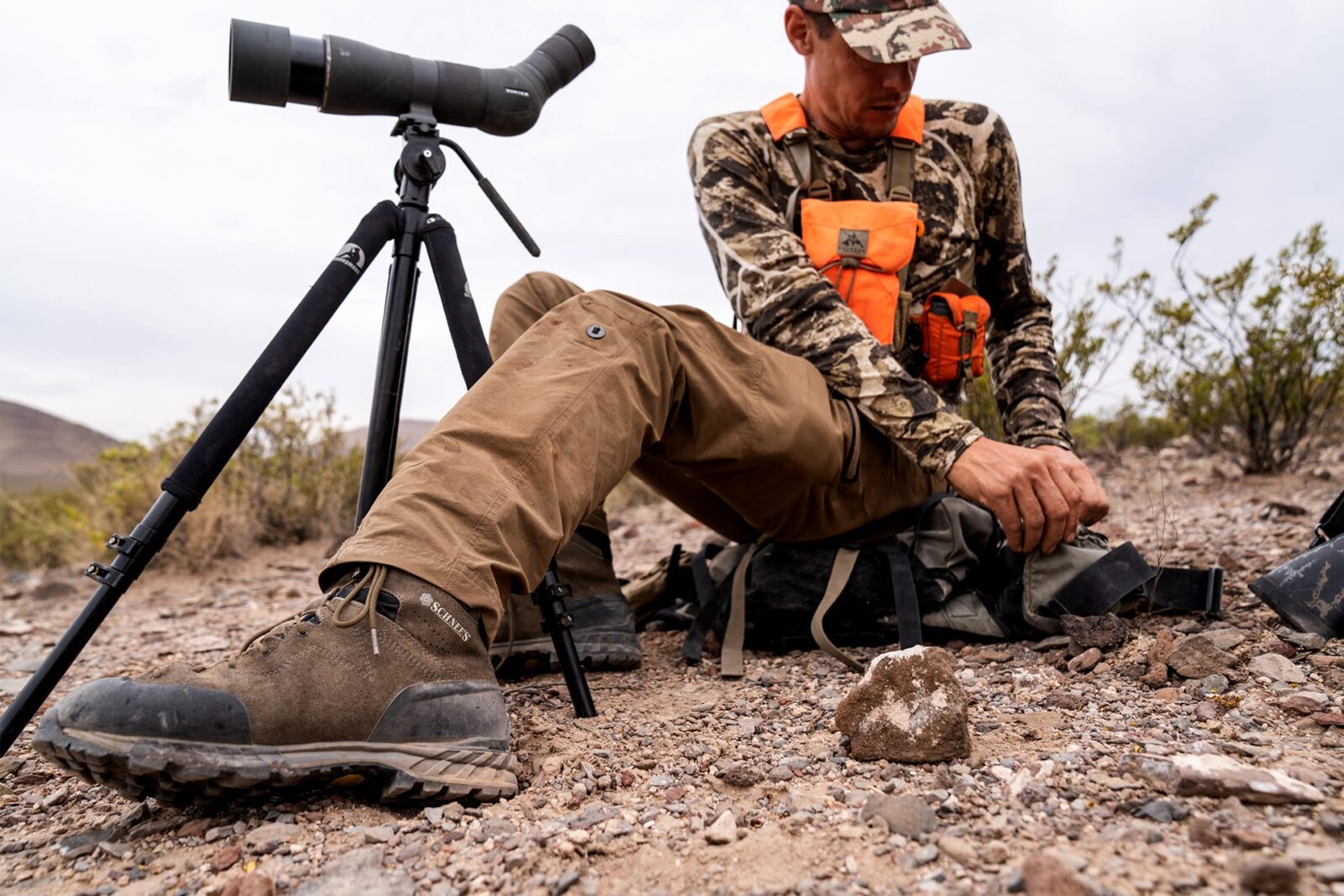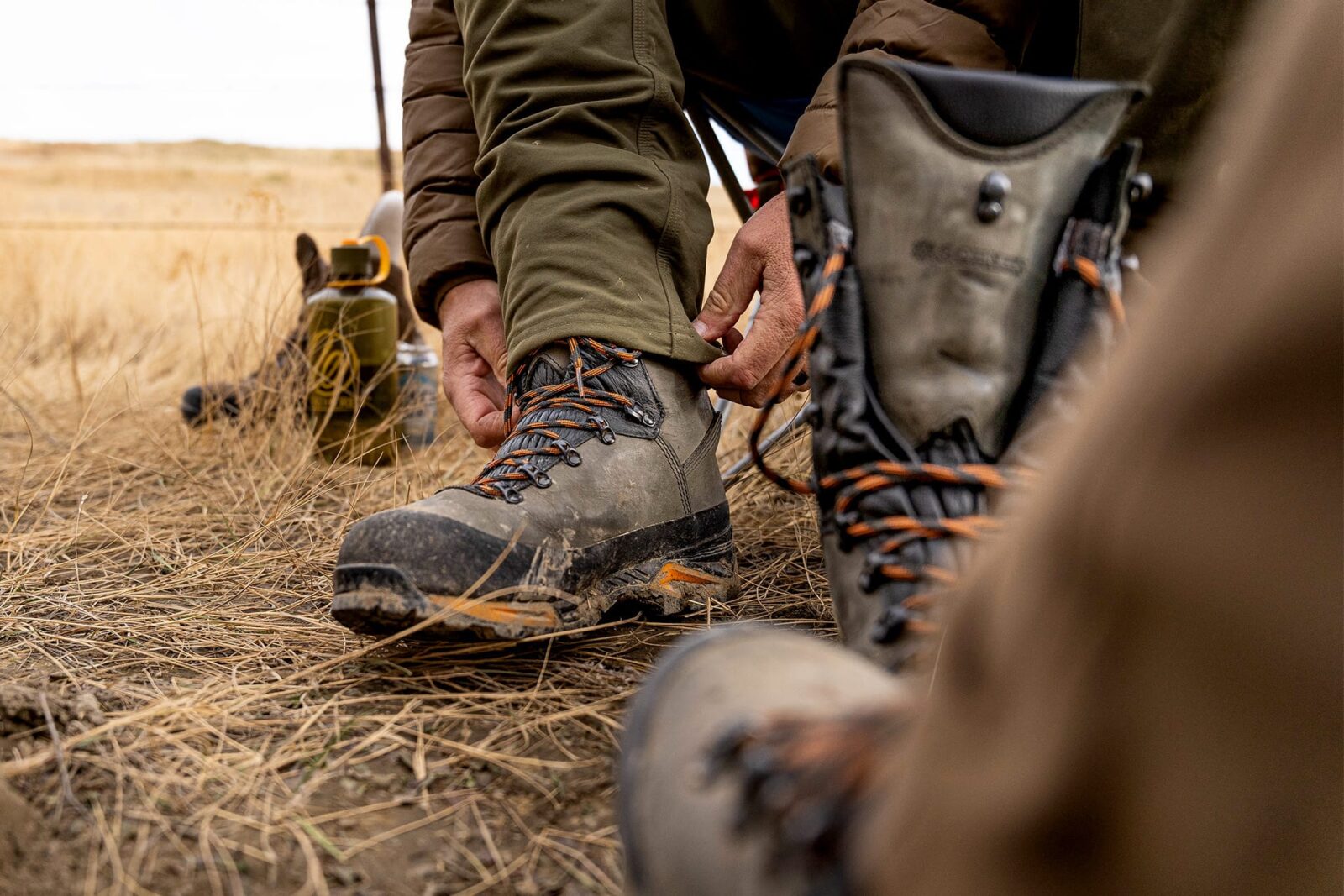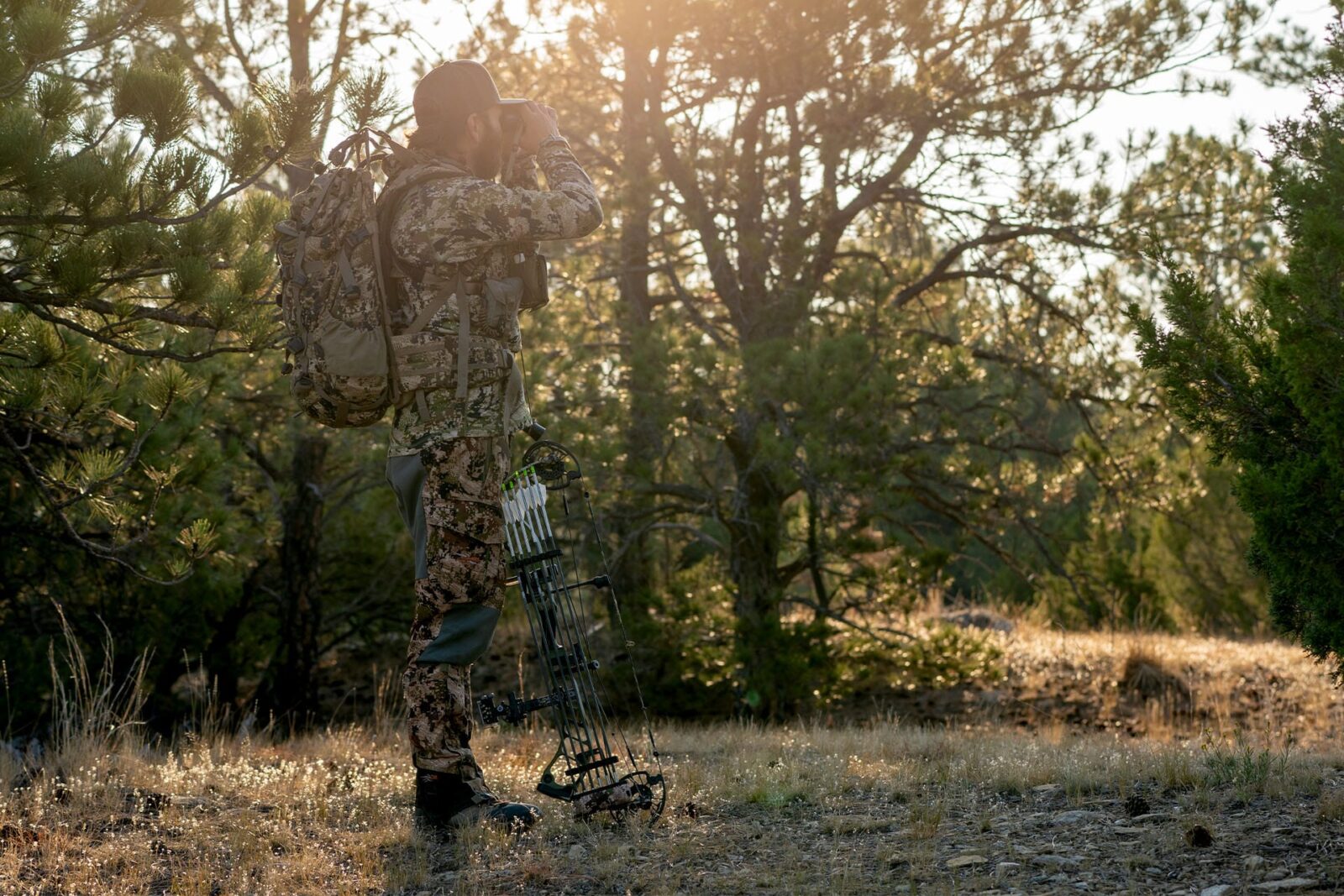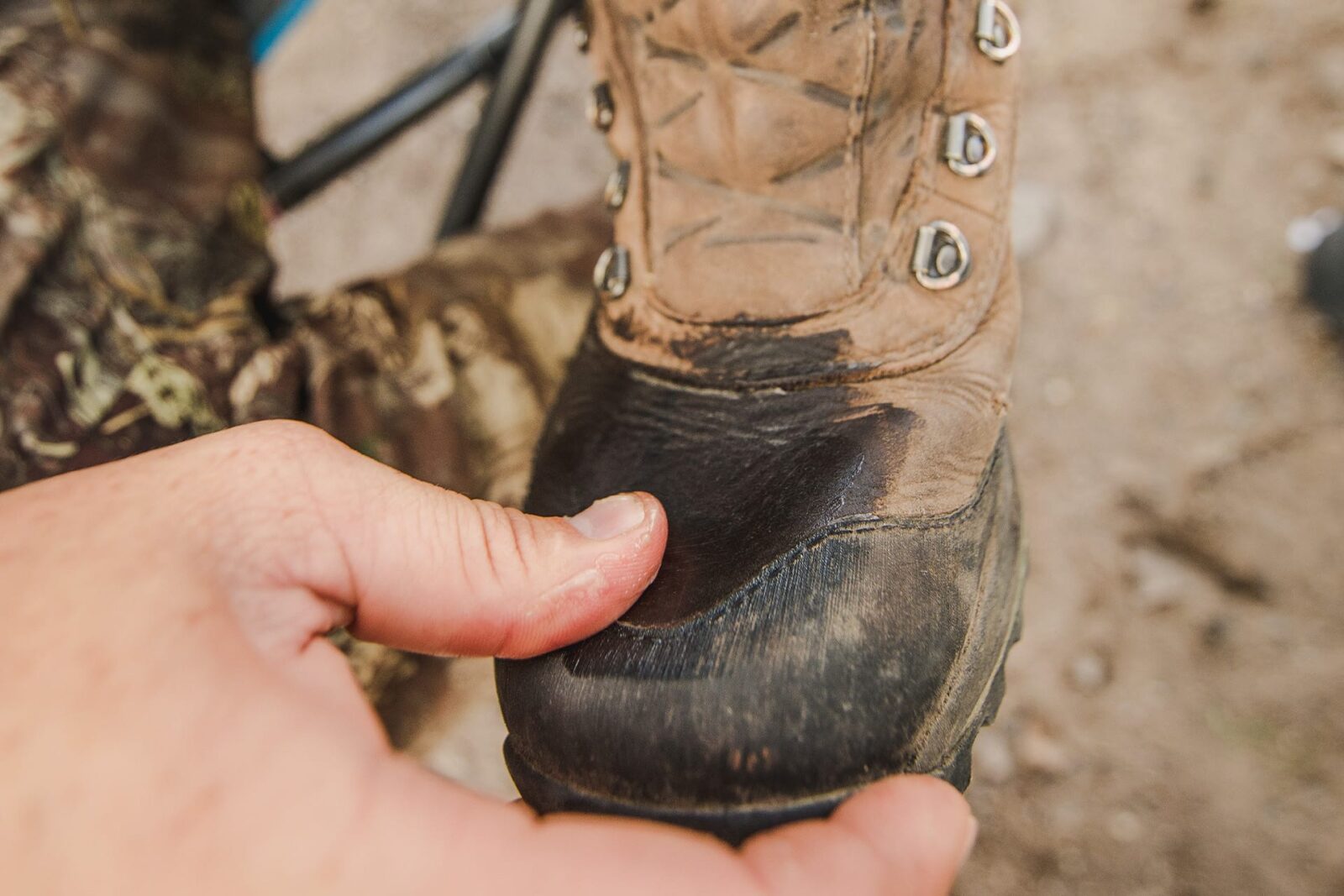Walk a mile in any hunter’s boots and you’ll see why keeping them in tip-top shape should be a year-round focus. Thankfully, boot care and maintenance are not difficult tasks. You just need to be mindful of what breaks down hunting boots quickly and what you can do to protect against it.
Schnee’s Boots (pronounced “Shnay’s”) have been crafting rugged, leather mountain boots since 1974 in Bozeman, Montana. For decades they have coached hunters, hikers, and boot wearers on how to care for their footwear. They now share those tips with us.
Leather Boot Care
Most hunters match their boots to the terrain they’ll encounter in a given season. From 13-inch-tall insulated Mountain Pac Boots to Schnee’s non-insulated 6-inch Kestrel boots, each boot is engineered to meet the demands of the conditions to which they are subject. But whether it’s dirt, stream crossings, or postholing in deep snow, boots can succumb to abuses quicker if they’re not treated with a few simple measures of TLC.
“Honestly, boot care is really simple,” says Schnee’s Marketing Manager Matt Miller. “The biggest tip with boot maintenance is not overdoing it. A lot of guys think they need to go ballistic with conditioner and stuff. I’ve seen boots completely caked full of waxy buildup in the lace hooks and tons of conditioner to the point it looked like someone had soaked them in a deep fryer. Less is more.”

Leather hunting boots are often preferred because of their rugged construction, so it’s the leather that we want to treat right and care for. Other parts of the boot, like the outsole, are easily repairable or replaceable. Leather, on the other hand, is that one material that we need to maintain the right amount of stiffness or flex in just the right spots, while not cracking over time. It’s a fine balance to maintain. And more than miles, perhaps, there’s one enemy every leather boots have that will outright destroy them if not addressed properly.
“Water,” says Miller. “Water’s the big one. Water saturation can do a few different things. One of them is that it can shrink leather, so if you saturate the leather and it dries out a little too fast it can shrink. It also makes the boots dry out faster each time they get wet. When a boot loses its oils and inherent moisture the leather will dry faster, which destroys the boot.”
When leather boots do get wet, never dry them over direct heat. That means they need to stay away from campfires and woodstoves. “You definitely never ever, ever, ever want to put any boot next to a fire,” says Miller. “We hear about a lot of people doing that. Don’t try to rush it. Instead, some people stick them in their sleeping bags at night to dry more slowly. Or they hang them up in their tent to air dry. They might not be super dry in the morning but at least they won’t be shrunk.”
At home, hunters can use boot dryers to slowly dry wet boots. “We definitely use boot dryers here, especially ones where you can control the temperature,” says Miller. “We like to say it’s similar to washing your clothes on delicate. Dry your boots as gently and for as long as you can.”

How To Treat Leather Boots
“One of the reasons we really like Nikwax is that it keeps leather from getting saturated by water,” says Miller. “Out of the box, we’ll recommend a coat of Nikwax. And that’s not because our waterproofing is inadequate, or they’re not going to last. It’s really just about helping the boot leather not absorb water like a sponge. Our mountain boots are waterproof. You won’t get any water on your foot, but the leather can absorb water and become saturated so Nikwax helps prevent that.”
Nikwax also has some conditioner in it that adds shine to leather boots, especially after a season or two of wearing them. “I personally reapply Nikwax to my boots about three times a season,” says Miller. “Whereas your guide and outfitters might put it on six times a season.”
Straight leather conditioner is another tool to help boots last longer, but it usually isn’t used by itself, or very often. “Why we don’t recommend using just conditioner,” says Miller, “is because it’s not meant for membrane-constructed materials (ie. GORE-TEX or similar). It’ll inhibit the membrane’s ability to do its job. It would be like taking a screen door and rubbing a wax candle on it. What’s going to happen to it? It’s not going to let any air through it because it’s clogged up with wax.
“Most of the mountain boots out there, ours included, are made from pretty rigid leather on purpose. You get support from that leather. When you apply a lot of conditioner it oversaturates the leather to the point where it softens and loses its rigidity. I’ve heard some people refer to leather boots as leather socks after a few years because of too much conditioner.”
“Where we do recommend leather conditioner,” says Miller, “is if you look at them and they are dried out, cracked even. An easy way to tell is by pigment. When the boots are new they’re a good deep brown color, almost auburn. Over time as they start to dry out they’ll start to look pale or even white. That’s when you might use a little bit of conditioner to rehydrate that leather. Then, afterward, going over it with some Nikwax.”
Do these things and your boots will outlive the shoelaces they came with.
“There’s no reason a good pair of leather boots won’t last at least five years,” says Miller.

Synthetic Hiking Boot Care
We know that not every hunter dons leather mountain boots. There are many quality synthetic boots on the market. If you’re in this camp, caring for your hiking boots is just as important, but there are a few different methods you can use.
Synthetic boots are magnets for mud, sand, grit, and tree sap. That’s why a post-hunt cleaning is the first thing you should do with your boots. It’s recommended that boots get cleaned after every hunt or hike because all the natural debris they encounter acts as abrasives on the boots’ uppers, and just as if you were rubbing sandpaper over them every time you wore them, they’d wear out in less than a season without regular cleaning.
If your boots are only lightly soiled you can get away with using a damp cloth to wipe away the grime, followed by a slow drying process (same as with leather boots).
Dirtier boots need a bath. Here’s a step-by-step guide to deep-cleaning hiking boots:
- Remove the laces and insoles. To clean the laces and insoles you can soak them in a bowl of warm water with some mild dish soap. If your insoles are beginning to smell, sprinkle on some baking soda and set out to dry.
- Get the heavy stuff off your hiking boots. Using an old toothbrush or a boot brush, scrape off any caked mud or dirt first. You can do this outside or over a trash can.
- Using a sink, tub, or basin, fill it with warm water and add some drops of mild dish soap. You can submerge the entire boot if it’s synthetic. Then, using a cloth or brush, clean the boots inside and out. If you have stubborn stains on your boots you can use Nikwax Footwear Cleaning Gel (which is great for leather boots too).
- To remove the soap residue after washing grab a clean cloth and dampen it. Then wipe the boots down.
- If you plan on adding more waterproofing treatment to your hiking boots, you do it now that they’re still damp. Follow the directions for the treatment you have. Otherwise, it’s time to dry them out. You can use a boot dryer, stuff them with newspaper and let them dry naturally, or put them in front of a fan.

Boot Care Kit
When you’re ready to build your at-home or on-the-go boot care kit, there are a few essentials you should always have.
“Before you add any wax to your boots you want to clean them pretty good,” says Miller. As discussed above with synthetic boots, dirt and grime can be abrasive, so cleaning leather boots is step one before reapplying Nikwax. If you’re applying the initial wax coating on new boots out of the box then no cleaning is necessary.
The Best Boot Care Kit
- Nikwax Waterproofing Wax for Leather
- Horsehair Brush
- Nikwax Footwear Cleaning Gel (or mild dish soap)
- Premium Leather Conditioner
- Montana Pitch-Blend, or similar (This is only used sparingly on stiff leather boots, such as Schnee’s Mountain Pac Boots, to maintain the leather’s rigidity.)